The Carleton University Crash Dummy (CUCD) team performed a rear-end collision test between a motor vehicle and cyclist in co-ordination with the Ottawa Police Service Collision Investigation Unit on Friday, March 29, 2019, at the Canadian Tire Centre.
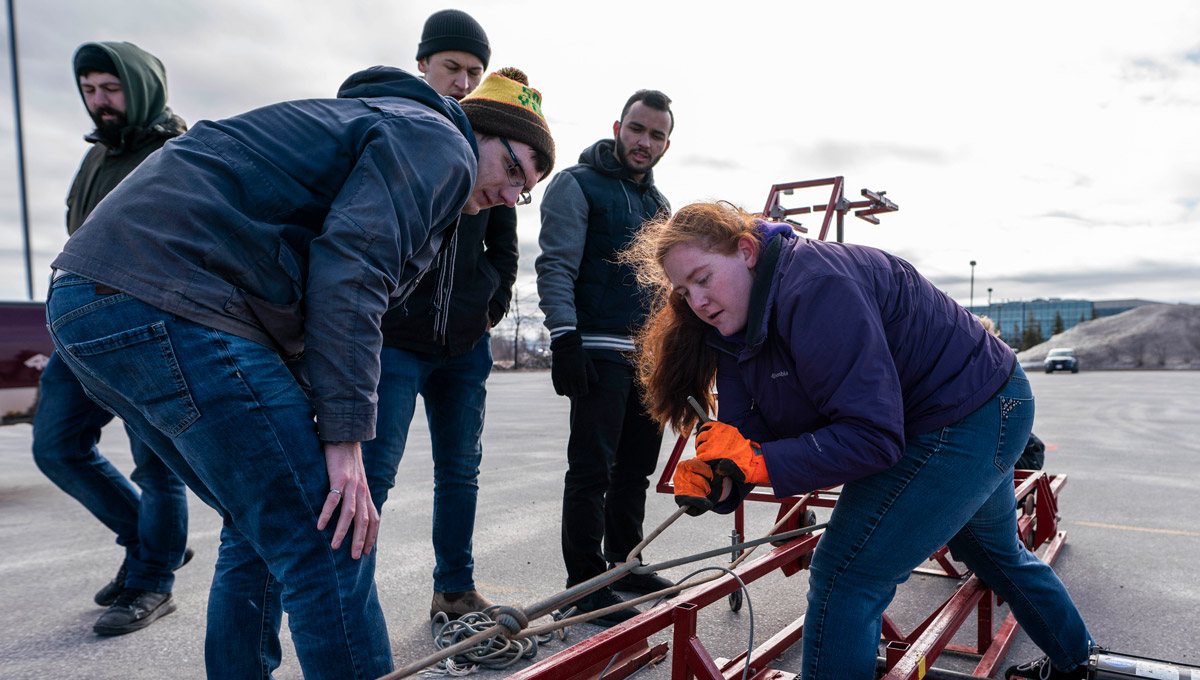
“The CUCD is a fourth-year capstone project involving 27 students,” said Andrew Speirs, professor in the Department of Mechanical and Aerospace Engineering. “This year, the students have made the dummy more anthropometric and covered it with 3D printed skin to prevent unrealistic metal scrapes on the ground. We hope to recreate a realistic collision including the marks typically left on the pavement.”
Fourth-year engineering students, along with professors from the Department of Mechanical and Aerospace Engineering in the research-intensive Faculty of Engineering and Design, participated in the crash test simulation to help the Collision Investigation Unit better understand the impacts of collisions between vehicles and cyclists.
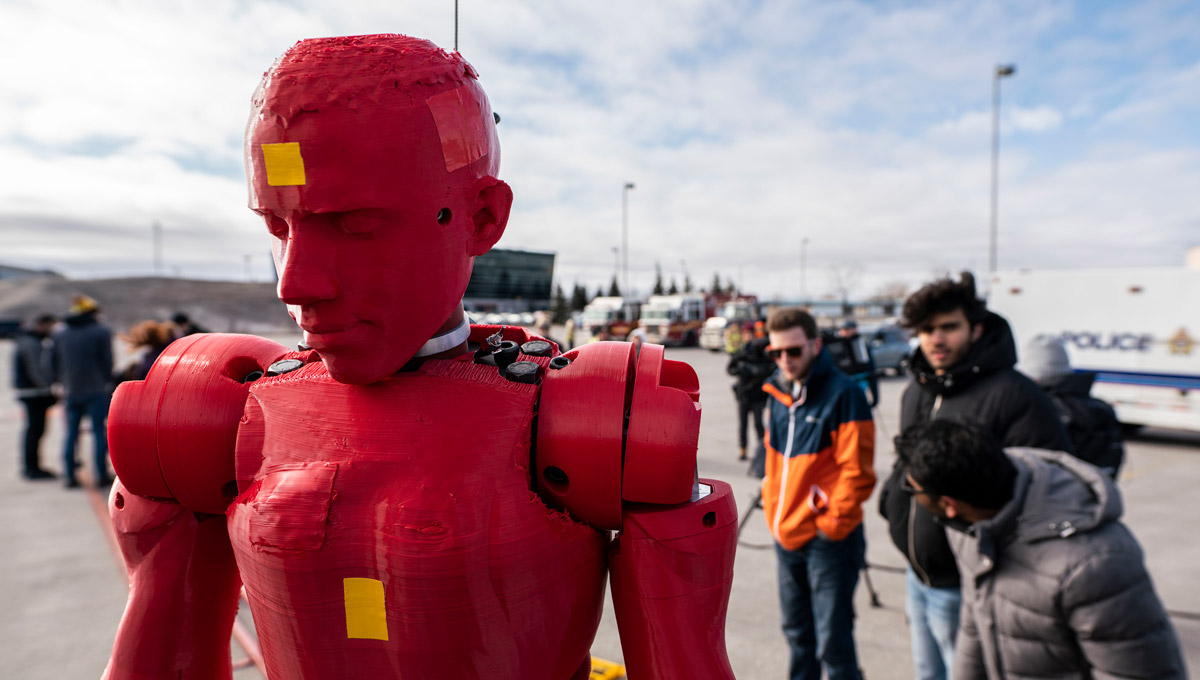
Understanding the Impacts of Collisions Between Vehicles and Cyclists
“We are all very excited to finally see the results of our labour,” said Jessica Christie, student project co-ordinator. “Everyone has put so much hard work into their respective roles, and to finally see our system be tested is very exciting for all of us.”
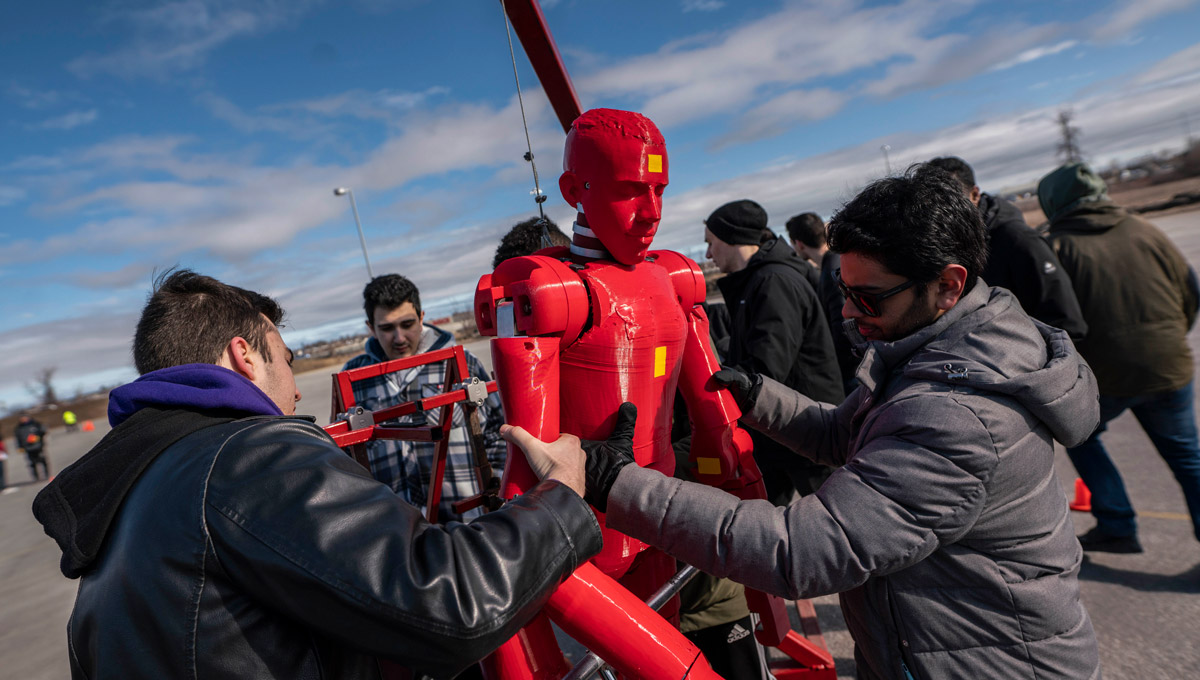
“Working on this project has been such a fantastic learning experience and I feel as though I have gained so much through my role. I have learned what it takes to be a great leader and how important it is to ensure open and respectful communication is happening between team members. CUCD is a celebration of the diverse skills team members brought to the design process and it is the result of great teamwork.”
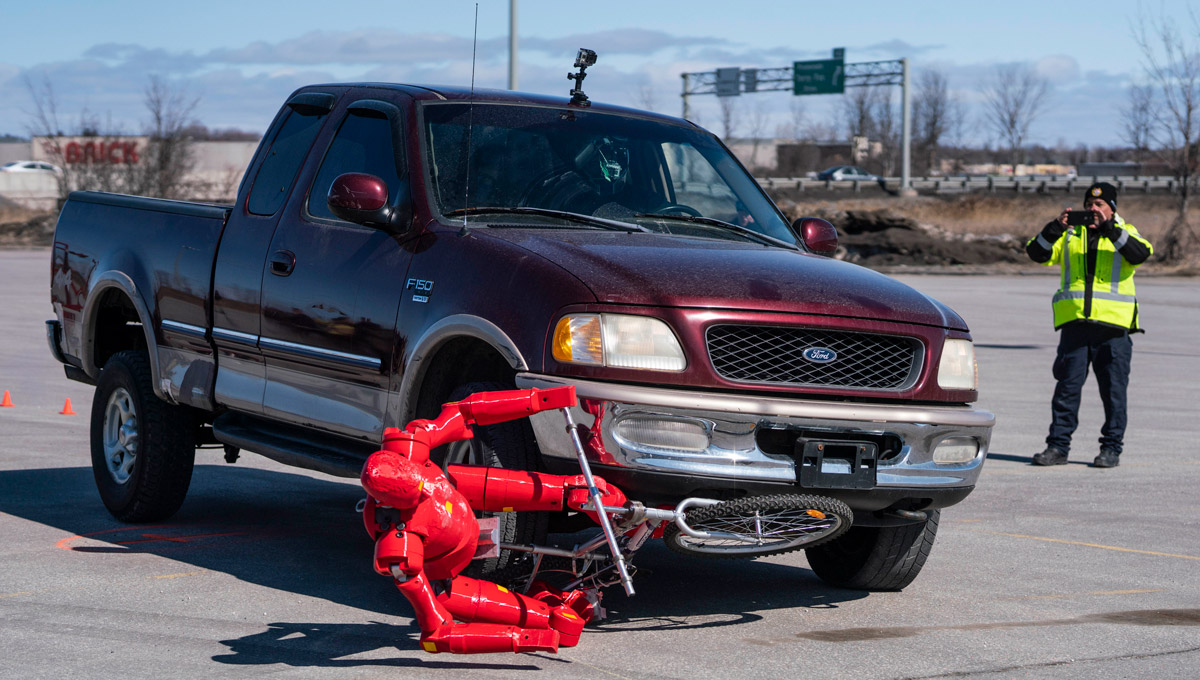
Identifying the Events that Occur During a Collision
The purpose of CUCD is to develop a simulated system that will aid the Ottawa Police Service (OPS) in identifying the events that occur during a fatal collision between a vehicle and a cyclist. The results of the test may contribute to improved collision reconstruction techniques used by the Collision Investigation Unit.
“For the last seven years we have been working with Carleton students using moving crash tests dummies and vehicle,” said Alain Boucher, a collision detective with the OPS. “This will help us establish what kind of evidence we should be looking for at scenes involving a bike and a vehicle, especially in terms of trace evidence on the ground. This partnership has been very useful to us over the years.”
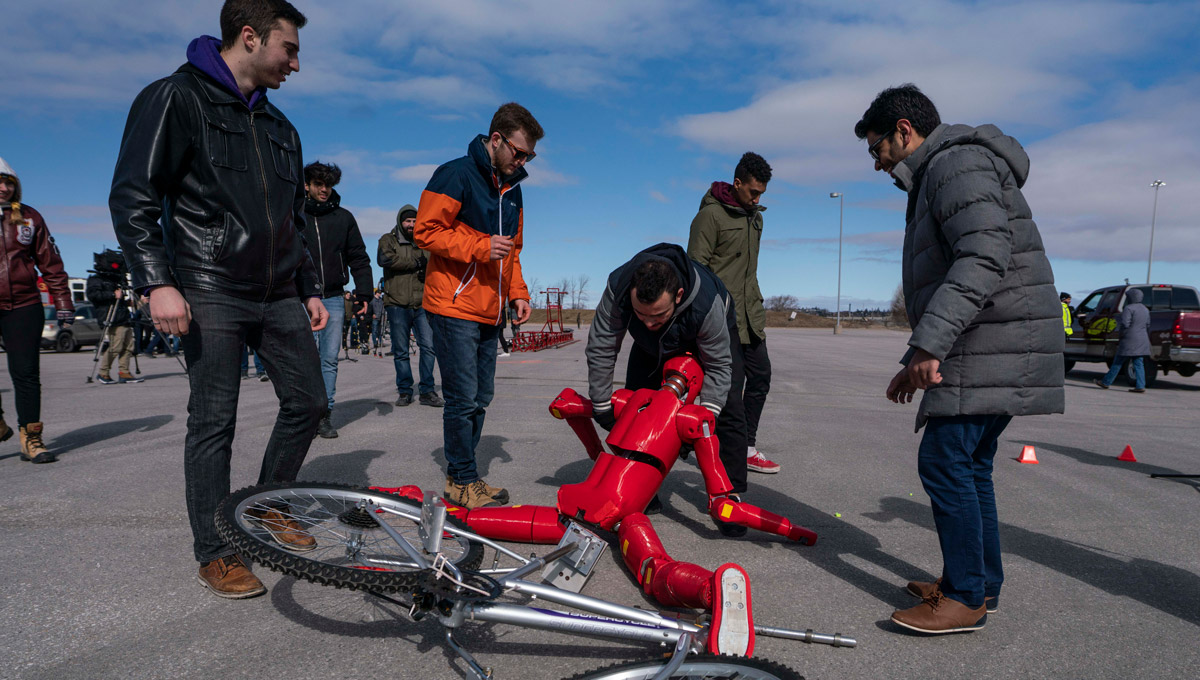
The 170-cm, 76-kg dummy named James was hit twice by a pickup truck driven by a member of the OPS. In both cases, the bicycle was going 20 kilometres per hour with the truck going 35 and then 70 kilometres per hour. There are six sensors in the dummy’s head, three load sensors and three accelerometers. The crash was captured by a series of cameras. The captured video will be reconstructed in 3D so the motion of the dummy during and after impact can be studied and compared to the evidence on the ground.
Tuesday, April 2, 2019 in Biomedical and Electrical, Biomedical and Mechanical, Capstone Design Projects, Experiential Learning, Feature Stories, Industry Collaboration, Mechanical
Share: Twitter, Facebook



